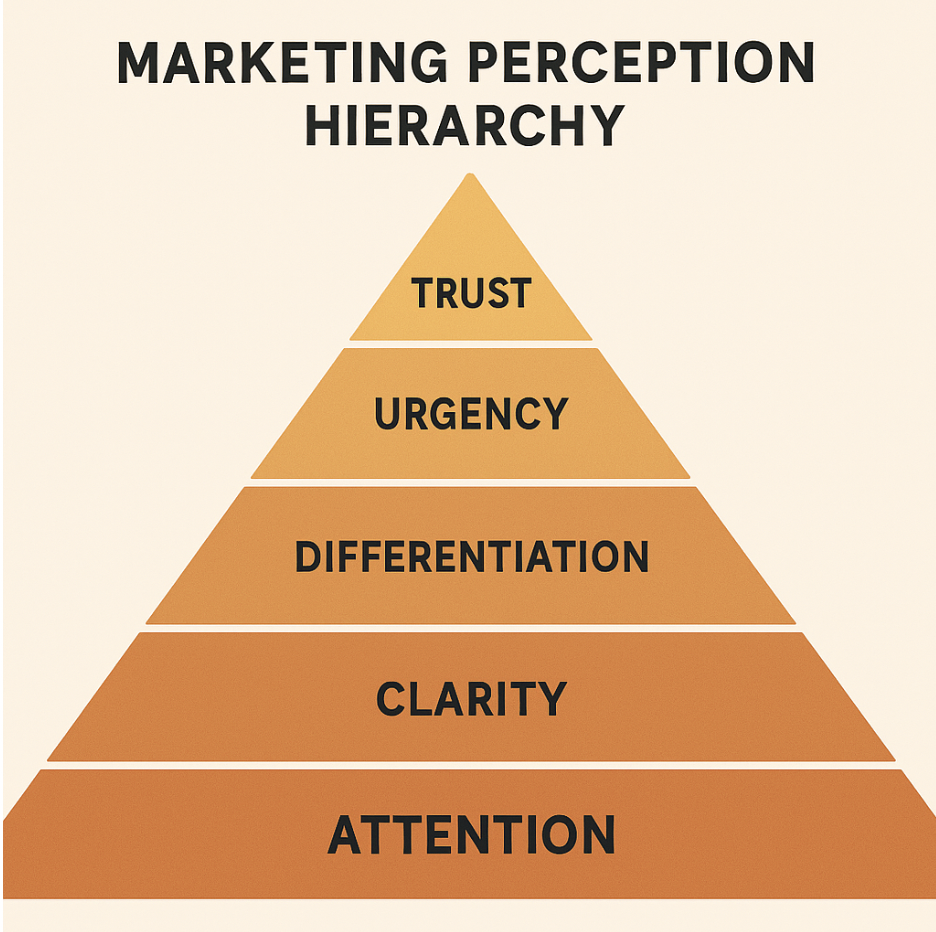How Marketing Grows Companies
CEOs and marketers make marketing too complicated.
Marketing strategy has two dimensions: the story and distribution.
A company’s story must be clear, differentiated, and urgent. That way, customers and those who influence them understand what the company does and for whom, why it’s best suited to deliver that value, and why the customer needs it now.
Take Sharp Pen’s own homepage copy (as of July 2025):
“Throw out the 2005 adtech marketing playbook. We handle marketing strategy, content, and PR for the most influential adtech companies. Take advantage of first-party communications channels to build trust, differentiate yourself, and drive urgency.”
This story checks all three boxes:
Clear: We handle marketing strategy, content, and PR for adtech companies. You know what we do and whether you’re a potential fit for our services.
Differentiated: We help you “take advantage of first-party communications channels...” — the CEO evangelism playbook, which sets us apart from typical agencies.
Urgent: “Throw out the 2005 adtech marketing playbook.” You’re 20 years behind. Better catch up.
When a story is clear, differentiated, and urgent, customers can:
Tell if you’re selling something they need.
Understand how you differ from alternatives.
Feel compelled to buy now.
If a message does those three things, it has the right components.
But that’s just half the job. A great story means nothing if you don’t get it in front of the right people. So, the second half of marketing strategy is distribution.
You can think of this as a perception pyramid:
Attention: You can’t achieve anything without it. So, it’s the foundation — the first thing you need to achieve.
Clarity: What are they saying, and is it for me?
Differentiation: Are they saying something unique?
Urgency: Do I feel compelled to act now?
Trust: Do I believe they can solve my problem?
Most people skip the foundation. They fear saying the wrong thing more than they fear saying nothing. But attention is the gateway to marketing value. Without it, your perfect argument doesn’t matter.
So, first, make sure you’re telling a story worth your customers’ attention. At Sharp Pen, we call this a brand narrative, and the first question we ask to craft is: “What’s wrong with the status quo?” Then: “How are your customers getting screwed over by the status quo? Who’s screwing them over?” This leads to a provocative story about heroes, villains, and the industry as a whole that should earn the attention of your customers and those who influence them.
Once you optimize the story itself for attention, think about where your customers hang out. My clients, for example (adtech CEOs and marketing leaders), are on LinkedIn and X. They also read newsletters and listen to podcasts. That’s where we reach them. Other companies may prioritize other channels. You can sell beer on LinkedIn — but it’s not your core channel. For adtech companies selling to brands, agencies, publishers, and other adtech companies, the core channels are probably LinkedIn, X, email, podcasts, and the ad trades.
That is, in a nutshell, how marketing grows companies: create an attention-worthy, clear, differentiated, and urgent message, and distribute it consistently where your audience lives.
You can go deeper. Many do. But most executives and marketers get too granular too quickly. If a CEO asks, “Does marketing really work?” I wouldn’t start with content marketing, product marketing, or ABM. Though many marketers do exactly that.
Instead, I’d start from first principles: marketing grows companies by telling a clear, differentiated, and urgent story and getting that story in front of the right people, regularly, to build attention, clarity, differentiation, urgency, and trust. When that happens, you get more leads, faster sales cycles, and higher-quality deals.
That’s how marketing grows companies.

